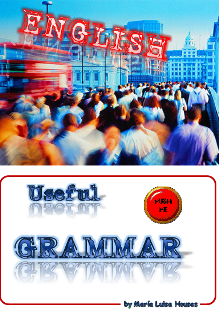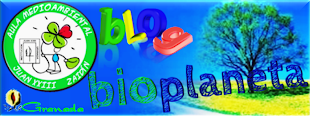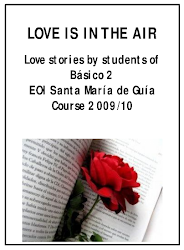
Meeting Point "Punto de Encuentro"
EL OBJETIVO DE ESTE BLOG SERÁ FAVORECER EL TRABAJO DIARIO Y SER UNA HERRAMIENTA MÁS PARA EL AUTOAPRENDIZAJE DE LOS ALUMNOS. SE RECOPILARÁN LOS TALLERES Y LAS ACTIVIDADES REALIZADAS POR LOS ALUMNOS Y ALUMNAS. ESPERAMOS QUE SEA INTERESANTE Y ENRIQUECEDOR. COMPARTIREMOS ACTIVIDADES, NOTICIAS E INFORMACIONES DE INTERÉS PARA TODA LA COMUNIDAD EDUCATIVA.
TRADUCTOR
ENGLISH ISSUES
El cambio permanente de la sociedad actual en todos sus aspectos, como consecuencia de los avances tecnológicos y las nuevas tecnologías de la información y comunicación, los progresos socioeconómicos, etc… conlleva también una innovación en el campo educativo. La nueva globalización para que no sea opresiva, una imposición sociocultural y económica, requiere una acción educativa crítica y solidaria, no discriminatoria.
Esta tarea de conciencias, desde la acción educativa, pasa necesariamente por la incorporación en el currículo de las nuevas tecnologías de la información y la comunicación, el plurilingüismo, y toda innovación que suponga un avance. Acción que en nuestra Comunidad Andaluza, dentro del Marco Común Europeo de Referencia para las lenguas, se podrá llevar a cabo por medio de proyectos bilingües en los diferentes centros educativos.
Nuestro centro está decidido a esta incorporación bilingüe, con pretensiones de plurilingüismo, porque supone:
- Luchar contra la desaparición de lenguas, con el consiguiente empobrecimiento del patrimonio lingüístico de la humanidad.
- Luchar contra el pensamiento único, la cultura única, la lengua única.
- Luchar contra las desigualdades sociales, raciales, económicas, etc…
- Que nuestros alumnos estén al día en las distintas tecnologías, en las que hay muchas palabras y tecnicismos en inglés, siendo un lenguaje universal, que no tienen traducción o comparación en español, demostrando una vez más, que el conocimiento de otras lenguas es imprescindible.
La sociedad en la que vivimos requiere y exige el conocimiento de otras lenguas.
Siempre estaremos dispuestos a hacer todos aquellos proyectos o actividades que favorezcan la calidad y el enriquecimiento de toda nuestra Comunidad Escolar.
Un saludo.
Love Stories For Reading
miércoles, 21 de septiembre de 2011
lunes, 19 de septiembre de 2011
Sites for language learners.
lunes, 12 de septiembre de 2011
miércoles, 7 de septiembre de 2011
martes, 6 de septiembre de 2011
domingo, 4 de septiembre de 2011
viernes, 2 de septiembre de 2011
LONDON
London is wonderful!
– HP… Houses of Parliament. – PC… Piccadilly Circus.
– SC… Speaker´s Corner. – BP… Buckingham Palace.
– DS… Downing Street. – HG… Horse Guards Parade.
– WA… Westminster Abbey – CG… Covent Garden.
– LS… Leicester Square. –TS… Trafalgar Square.
– MA… Marble Arch. – MT… Madame Tussaud´s
– VR… Victoria Railway Station - RE... Royal Exchange
- SP... Saint Paul´s Cathedral - BE... Bank of England
- TL... Tower of London -TB... Tower Bridge
- M... The Monument - SC... St Cathrine´s Dock
Piccadilly, Baker Street, Regent Street, Oxford Street,
Charing Cross Road, Park Lane, Petticoat Lane,
Liverpool Street... and the River Thames.
· What are the names of the parks on the map?
The map shows different parts of London: The West End where you find elegant shops, theatres, cinemas, expensive hotels, clubs as well as buildings for Government (Westminster) and The City. The two are not the same! The City is where you can find the “typical English man” wearing a pin-striped suit and carrying umbrella, briefcase, and the Times newspaper, because this is where the banks and insurance companies are. The City is the oldest part of London, but only one of the buildings below is very old. Which one is that? Many buildings in The City are quite new-about forty years old. Why?
GAME
Guess the names of the buildings or places corresponding to these descriptions.
The river Thames is where and why London came to be. By creating London, it changed the face and the map of the world. The Thames is London´s river, and it is pure history. The Celts, the Romans, the Angles, the Saxons, the Vikings all sailed up it. It has been a witness of England history: the building of Westminster Abbey and the Tower of London, the traders and pirates, the Great Fire of London, the riots in Trafalgar Square, the construction of railways, the digging of the underground, the public executions, the suffragettes, the installation of electric street lamps, the hunt for Jack the Ripper, the crowds running for air raid shelters as the Thames served as a flight path for German bombers blitzing London during the second World War, the building of the high office blocks, the immigration from the old colonies, the invasion by tourists and language students…






















